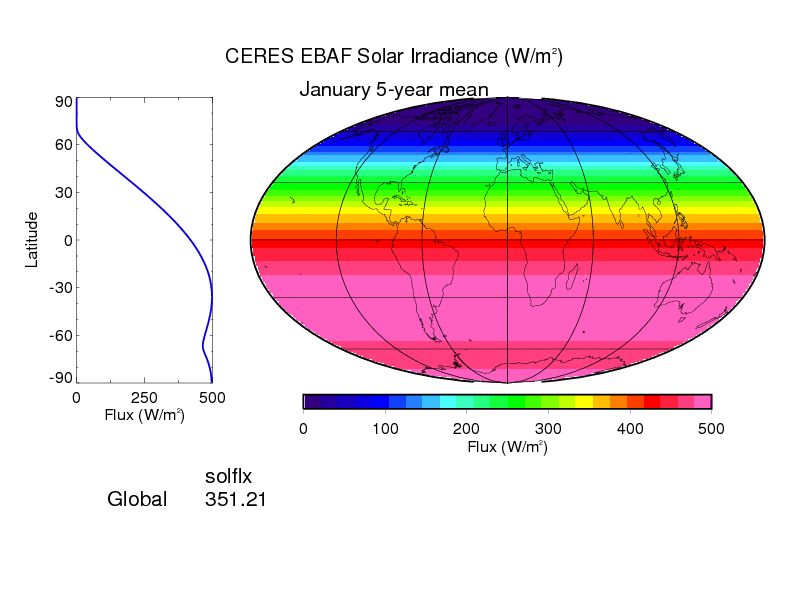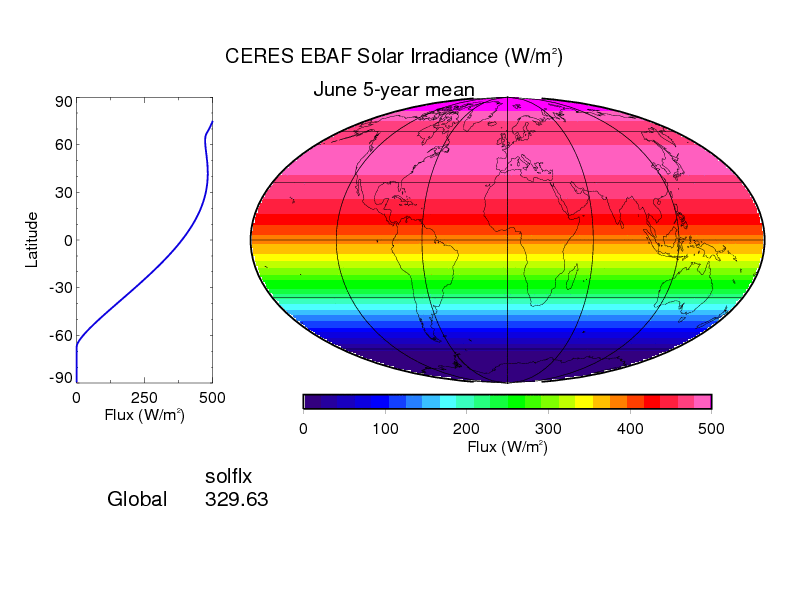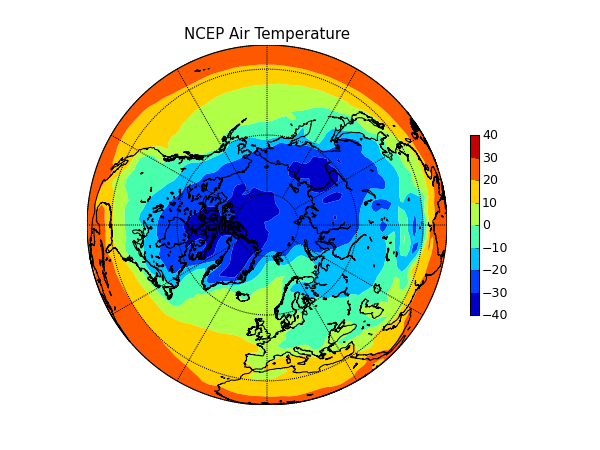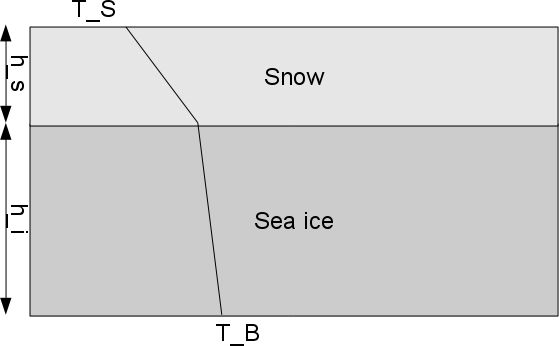This page will be updated during the course 2015
Sea ice 2
Lecture, exercises and practical by Prof. Dr. Lars Kaleschke
Thursday 10:15-11:45
- GB 5, Rm 006
- Start 9. April
Description of the course
The lecture will cover the thermodynamic coupling between the sea ice, the ocean, and the atmosphere. It is designed for master-level students with moderate knowledge in numerical methods, scientific programming, and sea ice physics. A conceptual model of the Arctic will be derived and simulation results will be analyzed. For didactical reasons the model will be developed from scratch and kept as simple as possible, but complex enough to learn about the basic principles of the thermodynamic interaction between the ocean, the ice and the atmosphere for climatic, oceanographic and meteorological studies.
Links
Sea Ice Prediction Network Webinar 3 March 2015 by Elizabeth Hunke "Sea Ice Modeling: Characteristics and Processes Critical for the Radiation Budget"
http://www.arcus.org/files/webinars/pdf/sipn_webinar_3_march_2015_hunke_presentation.pdf
https://www.youtube.com/watch?feature=player_detailpage&v=zljsJ5lsZoM
Lesson 0 - A short introduction to the Python programming language
Lesson 1+2 - Ocean mixed layer and radiative forcing without sea ice and atmosphere
Group results
/Group1 /Group2 /Group3 /Group4 /Group5 /Group6 /Group7 /Group8 /Group9 /Group10
Scenario 1
- Ocean mixed layer forced by shortwave radiation only
- No atmosphere
- No exchange with deeper ocean layers, immediate mixing
- Heat balance at the sea surface: Short wave incoming radiation + long wave outgoing radiation
latex error! exitcode was 2 (signal 0), transscript follows:
- Numerics: forward-in-time integration, finite differences
latex error! exitcode was 2 (signal 0), transscript follows:
Research questions
Compute the time evolution of the ocean mixed layer temperature T_ml(t) for different h_ml, initial temperatures T_ml(t=0), and short wave insolation Q_SW.
Estimate the typical time scale for stationarity and select appropriate time step delta_t for model integration.
Change insolation after the model has reached stationarity.
Lesson 3+4: Incoming shortwave radiation
Top of the atmosphere
A rough approximation for the flux of solar irradiance at the top of the atmosphere (TOA) can be derived from geometric considerations, e.g. Parkinson and Washington (1979)
latex error! exitcode was 2 (signal 0), transscript follows:
with the solar constant S=1360 W/m2, the solar zenith angle Z. The cosine of the zenith angle is given by
latex error! exitcode was 2 (signal 0), transscript follows:
where
latex error! exitcode was 2 (signal 0), transscript follows:
are latitude, declination, and hour angle in the equatorial coordinate system, respectively. The declination and hour angle are approximately calculated as
latex error! exitcode was 2 (signal 0), transscript follows:
whereas the solar time is given in hours and it may be approximated by 24 hours per day.
Research questions
- Calculate and plot the diurnal cycle of solar irradiance for the latitude of Hamburg on May 1st.
- Calculate and plot the daily averaged solar irradiance for three latitudes (0, 50, 90) as a function of time
- Calculate and plot the zonal averaged solar irradiance for different months (e.g. January and July)
- Compare with the calculated irradiance with CERES measurements. See below for validation.
Calculate and plot the oceanic mixed layer temperature (h_ml=10m, T(0)=10° C) forced with the solar irradiance (lat=60°). Integration time shall be 3000 days. Explain the phase relation of temperature and irradiance.
- Change the time step to one hour and calculate the diurnal cycle of the oceanic mixed layer temperature. Vary the mixed layer depth and latitude.
- Add additional atmospheric longwave back radiation. Firstly, try a constant value of 100 W/m^2. Secondly, try Idso and Jackson's (1969) parameterization (see Parkinson, 1979). Modify the atmospheric temperature until the surface temperature is similar to a climatology.
Validation
Radiative flux measurements are available from the Clouds and the Earth s Radiant Energy System (CERES) sensor. Climatology products from the NASA Langley Research Center Atmospheric Science Data Center can be used to validate flux parameterizations. The CERES-Terra 5-year TOA global product has an easy to use browse interface. Select Terra based CERES EBAF (Net Adjusted) Browse Products (Monthly Means) Shortwave Incoming for a comparison to your results.


A long term numerical solution for the insolation quantities of the Earth (advanced)
For paleoclimate applications it is interesting to know how to calculate the insolation from astronomical parameters: La2004, source code
Lesson 5+6: Arctic surface energy balance
In this lesson we look at the energy fluxes at the ocean surface in polar latitudes. We will analyse the importance (magnitudes) of the different fluxes.
Scenario
- Average climate at about 75-80 N
- Ice growth model not yet included
- Case 1: Ocean surface
- Case 2: 100% sea ice cover
- Energy fluxes based on empirical formulations given in Parkinson and Washington (1979)
- Comparison to SHEBA data, and the forcing of Maykut and Untersteiner (1969) as used in Semtner (1976)
Research questions
- Calculate and plot the daily/zonally averaged solar irradiance as a function of time (day of the year)
- Modify the incoming shortwave radiation by a cloud factor (Eq. 4).
Calculate the incoming longwave radiation with Idso and Jackson's (1969) formula (Eq. 5). Take atmospheric temperature from climatolgy (e.g. NCEP file air.mon.ltm.nc) or SHEBA data (advanced)
- Calculate the sensible heat flux as a function of different temperatures and wind speeds (sensitivity study, use NCEP wspd.mon.ltm.nc). This exercise can only be done when the ice model is ready (next session). We need the sea ice surface temperature which is calculated with the ice model. But for calculating the sensitivities one can simply assume constant sea ice surface temperatures.
Compare to observed fluxes, e.g. Huwald et al. 2005
Observed fluxes from SHEBA experiment
The Surface Heat Budget of the Arctic Ocean Project provides a unique data set for sea ice studies. Huwald et al. 2005 Table 2 Table with numbers only and columns ordered Jan. to Dec.
Table 2. Monthly and Yearly Means of the Energy Budget Components Var Nov. Dec. Jan. Feb. March April May June July Aug. Sept. Oct. Year Mean Fswd 0.1 0.0 0.0 5.1 46.3 142.3 248.7 280.4 211.4 110.8 39.9 20.0 92.1 Fswu -0.1 0.0 0.0 -4.3 -39.4 -120.5 -204.4 -200.2 -135.9 -77.6 -25.9 -13.0 -68.5 Fsw 0.0 0.0 0.0 0.8 7.0 21.9 44.4 80.1 75.5 33.2 13.9 7.0 23.6 Fswp 0.0 0.0 0.0 0.1 0.6 1.8 3.6 9.6 12.8 5.5 0.5 0.2 2.9 Flwd 209.6 152.0 170.5 163.8 201.2 220.0 245.7 282.5 299.7 299.3 282.2 245.9 231.0 Flwu -227.1 -185.2 -197.6 -190.2 -222.1 -242.4 -273.7 -308.2 -314.5 -310.7 -293.0 -260.1 -252.1 Flw -17.6 -33.2 -27.1 -26.4 -20.8 -22.4 -28.0 -25.7 -14.8 -11.4 -10.7 -14.2 -21.0 Fsh 3.4 6.4 4.7 7.5 3.0 0.6 -1.1 1.5 1.6 -2.3 -0.4 1.5 2.4 Flh 0.3 0.3 0.1 0.0 -0.6 -0.5 -2.1 -2.2 -0.3 -1.5 -0.9 -0.3 -0.6 Fnet -13.8 -26.5 -22.4 -18.2 -12.0 -2.1 11.9 44.2 49.1 12.5 3.8 -5.0 1.7 Fcs 14.8 19.7 13.1 13.1 8.3 7.0 2.2 -2.0 -3.7 -0.5 4.6 9.7 7.2 Fms 0.0 0.0 0.0 0.0 0.0 0.0 -3.2 -30.4 -48.0 -6.0 -4.0 -2.0 -7.8 Frs 1.0 -6.8 -9.3 -5.2 -3.7 4.8 10.9 12.4 -2.7 7.6 5.4 3.2 1.5 Fcb -9.4 -13.0 -14.6 -13.3 -11.9 -8.2 -5.5 -2.6 -0.4 1.3 -2.3 -5.9 -7.1 Fmb 6.4 9.6 10.7 8.3 4.5 4.2 0.9 -7.3 -13.5 -15.2 -8.0 -0.8 0.0 Focn 3.0 3.4 3.9 5.0 7.4 4.0 4.6 9.9 13.9 13.9 10.3 6.7 7.1 Abbreviations are as follows: Fswd, Fswu, Fsw, Fswp, downward, upward, net, and penetrating shortwave radiation, respectively; Flwd, Flwu, Flw, downward, upward, and net longwave radiation, respectively; Fsh, Flh, sensible and latent heat flux, respectively; Fnet, net atmospheric heat fluxes; Fcs, conductive heat flux at the surface; Fms, energy of melt at the surface; Frs, net residual heat flux at the surface. The last three lines show the monthly and yearly means of the basal conductive heat flux (Fcb), energy of melt (Fmb), and the net residual heat flux, i.e., the ocean heat flux (Focn). All values are given in Wm-2.
How to use NCEP data
1 from pylab import *
2 from mpl_toolkits.basemap import Basemap, addcyclic
3 #import scipy.io # Old Version
4 from netCDF4 import Dataset
5
6 filename='air.mon.ltm.nc'
7 #fid=scipy.io.netcdf_file(filename,'r') # open file and create file identifier
8 fid=Dataset(filename,'r',format='NETCDF4')
9
10 print fid.description
11 print 'File includes the following variables'
12 for i in fid.variables.keys():
13 print i
14
15 lat0=fid.variables['lat']
16 lon0=fid.variables['lon']
17 air0=fid.variables['air']
18
19 print 'Units of variable air ',air0.units
20
21 # Make a copy for modification
22 lon=lon0[:].copy()
23 lat=lat0[:].copy()
24 air=air0[:,:,:].copy()
25
26 month=0 # select January
27
28 T=air[month,:,:]
29
30 # add cyclic for the gap between 360 and 0 deg longitude
31 Tc, lonc = addcyclic(T, lon)
32
33 m = Basemap(projection='ortho',lon_0=0.0,lat_0=90.0,resolution='l')
34 x, y = m(*meshgrid(lonc,lat))
35 ps=linspace(-40,40,9)
36 m.contourf(x,y,Tc,ps,cmap=cm.jet)
37 m.drawcoastlines()
38 m.drawmeridians(arange(0, 360, 30))
39 m.drawparallels(arange(-90, 90, 30))
40 title('NCEP '+air0.var_desc)
41 colorbar(shrink=0.5)
42 savefig('ncep.png',dpi=75)
43 show()

Lesson 7: Sea ice model
The 0-layer model of Semtner (1976) shall be implemented and tested. Use Newton-Raphson iteration (5 steps)
latex error! exitcode was 2 (signal 0), transscript follows:
to solve the energy balance equation for the surface temperature.

Standard parameters of Semtner (1976) in SI units:
latex error! exitcode was 2 (signal 0), transscript follows:
Scenario
- Sea ice only, no snow, no ocean
- Standard forcing (Table 1 in Semtner, 1976).
Research questions
- Calculate and plot the time evolution of ice thickness
- Discuss the influence of oceanic bottom heat flux
Deliverable: Report (15 August 2015)
- Description of conducted experiments
- Assumptions
- Governing equations
- Model variables
- Forcing data
- Model results (graph and descriptions)
- Source code
- Discussion and conclusions
Report format: PDF and .ipynb (if source code is not included in the PDF)
Send to: lars.kaleschke@uni-hamburg.de
Acknowledgments
This lecture is derived from content of a lecture Sea ice modeling by Aike Beckmann (Univ. Hamburg, Summer 2009) and a short course on Ice-Ocean Modeling and Data Assimilation which was conducted by Frank Kauker and Michael Karcher (Univ. Bremen, 6-7 December 2006).
Literature
Maykut, G.A. & N. Untersteiner, 1971: Some results from a time-dependent thermodynamic model of sea ice. J. Geophys. Res.,76, 1550-1575.
Semtner, A., 1976: A model for the thermodynamic growth of sea ice in numerical investigations of climate, J. Phys. Oceanogr, 6, 379-389.
Hibler III, W.D., 1979: A dynamic-thermodynamic sea ice model. J. Phys. Oceanogr., 9, 815-846.
Parkinson, C.L. & W.M. Washington, 1979: A large-scale numerical model of sea ice., J. Geophys. Res., 84, 311-337.
Sellers, W.D., 1969: A Global Climatic Model Based on the Energy Balance of the Earth-Atmosphere System, J. Appl. Met., 8(3), 392-400.
Philipp Johannes Griewank (2014): A 1D model study of brine dynamics in sea ice
